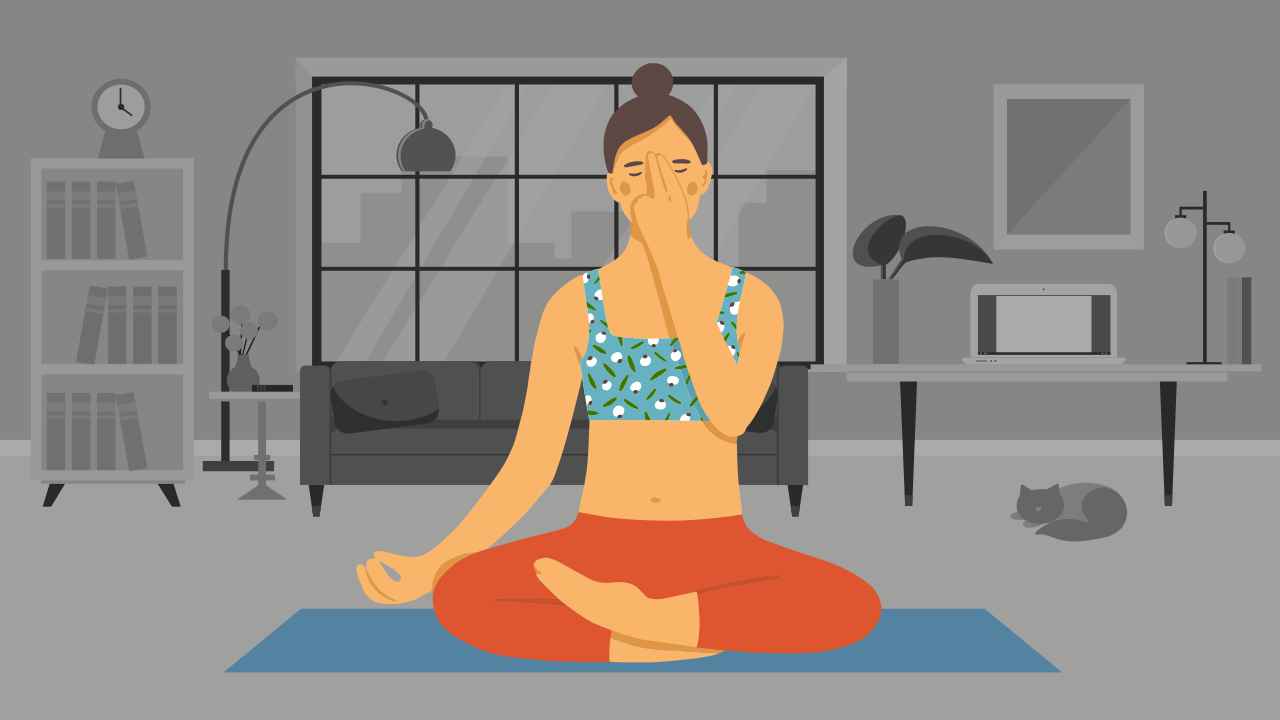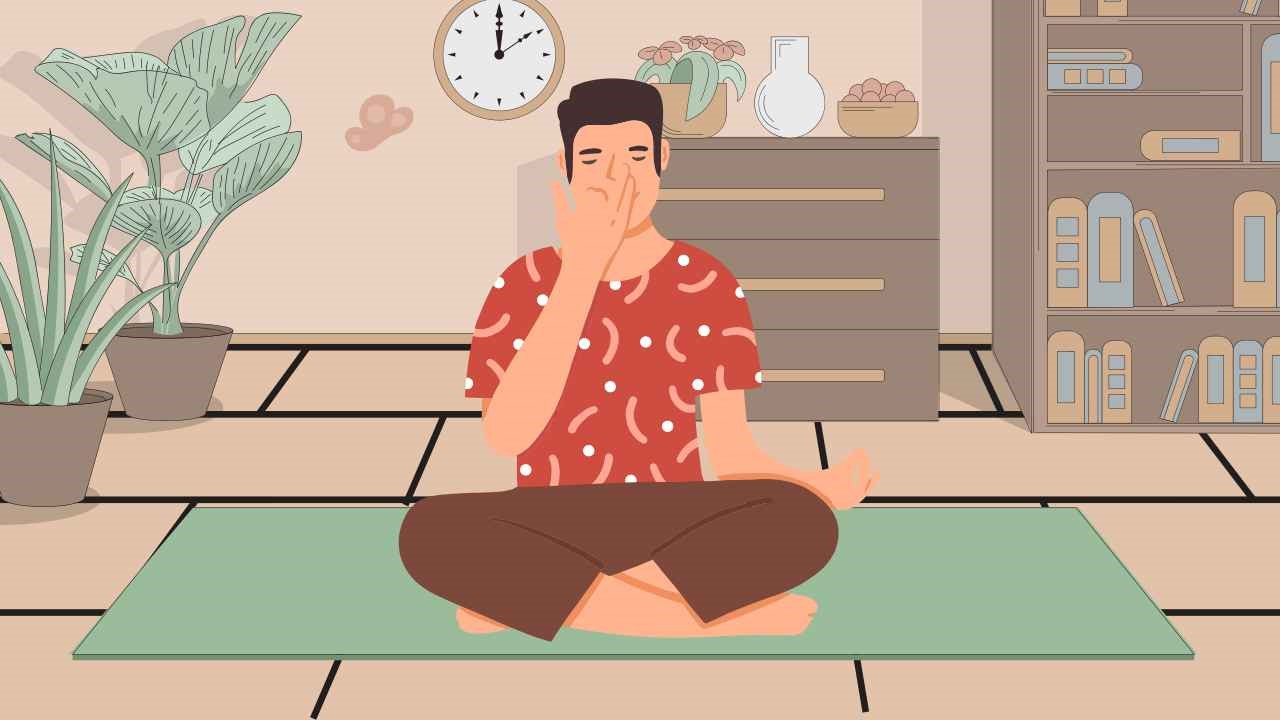
Yoga vs Stretching: What’s the Difference?

Yoga and stretching have been at loggerheads for a long time. Many feel that yoga is only a fancy term for stretching, which comes armed with some quotable philosophy, chants, and incredibly obscure Sanskrit jargon. But is this true?
Both yoga and stretching have advantages, including increased flexibility and athletic performance. However, how are the two really different from each other, and does one trump over the other? Read on to find out!
What is yoga?
Yoga is an ancient discipline that requires not just balance, stretching, and good breathing, but also mental peace and concentration. It’s based on an old Indian philosophy and comes in a variety of forms like Vinyasa, Ashtanga, and Power Yoga. Apart from physical exertion and the use of various postures of varying degrees of difficulty, yoga also includes diverse breathing methods and meditation. It promotes your physical, emotional, and spiritual health.
Also read:Yoga for Weight Loss: Asanas That Can Help Burn Fat
What is stretching?
One of the most vital aspects of any workout program is stretching. It has several health benefits, including helping relieve muscle tension and relax muscles after an exercise. Your muscles will remain tight and would not be able to perform effectively if you do not stretch at all. This can lead to muscular damage, joint discomfort, and strain. Stretching on a regular basis will assist in maintaining muscle flexibility, leanness, and length. It is also crucial to stretch daily, as complete flexibility can’t be achieved overnight.
Both stretching and yoga help reduce muscle tension and have the ability to activate the full body. But they use quite different techniques and have distinct functions to perform in your exercise regimen. We need to compare stretching versus yoga to see when is the best time to do one or the other.
Now, what distinguishes yoga from stretching?
Stretching is part of a warm-up routine for any kind of exercise, be it High-intensity Interval Training (HIIT), running, dancing, swimming, etc. Yoga is a form of fitness in itself. Here are a few parameters that involve a comparison between stretching and yoga.
1. Breath
Breathing is a key component of yoga. You breathe in and out while transitioning between postures, allowing your breath to direct the movement.
Stretching, on the other hand, teaches you how to breathe better during activity. It aids in the technique of not holding your breath.
2. Stretching exercises vs yogic asanas
If you’ve ever taken a yoga class, you’ve definitely noticed how similar some of the postures are to stretching.
For instance, Virabhadrasana or Warrior One is a high lunge stretch, while Malasana is a squat position. Similarly, Tadasana or Mountain Pose is a tall-lengthening stretch, and Paschimottanasana is a seated-forward hamstring stretch with both legs.
Stretching entails maintaining a position. You gradually lengthen the muscle until it reaches its maximal length. You push your body to the point where it gets uncomfortable, which typically results in a tension release
Conversely, a yoga workout consists of a variety of poses. Some are similar to (or even the same as) stretches, but the majority are not.
A yoga session can also take the form of a flow, where you go from one pose to the next, which does not happen in the case of stretching. You may hold a pose for several breaths, or switch from one to another quickly. So, while yoga can be calming, it can also raise your heart rate in some exercises, such as Power Yoga.
3. Levels of competence
Anyone can (and should) stretch, and anyone can (and should) practice yoga. Yoga workouts are tailored to different skill levels. Some poses take years to master and are impossible to perform before your body has grown to the required strength and flexibility. Contrarily, stretching is something that everybody can do. You will obtain the same benefits as someone who is exceptionally flexible in the same muscle, even if you are unable to go deep into specific stretches.
4. The objectives of the practice
Stretching and a yoga program, though similar in some aspects, may have completely different goals. Stretching, for example, can aid in the recovery of an injury, development of flexibility, enhancement of athletic performance, or the targeting of a particular problem area, such as the lower back. On the other hand, yoga is usually used for flexibility and mindfulness. However, you may also consider doing it for strength, posture, and balance.
Which is better: Yoga or stretching?
Yoga and stretching both have beneficial effects on the body and mind, including increased strength and flexibility. When deciding between stretching and yoga, think about what you want to get out of the experience. Yoga is a great way to supplement your training by focusing on breathing, strength, and balance, among other things.
Stretching is a better alternative if you want to improve your performance with regular exercise, get back to working out after an injury, or enhance your flexibility in a specific body area. According to studies, those who do not stretch on a daily basis have inadequate flexibility, a reduced range of motion, and a higher risk of injury. If stretching is not a part of your daily workout routine, you may be jeopardizing your current and future mobility.
Both yoga and stretching can do wonders for your mental and physical wellness. So, incorporating these activities into your day-to-day exercise schedule will be a wise idea.













